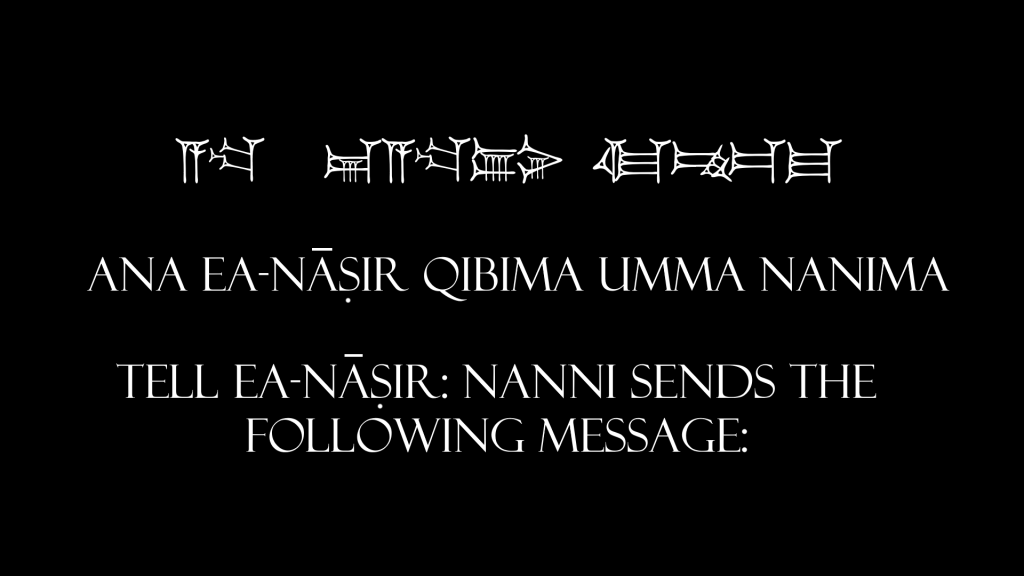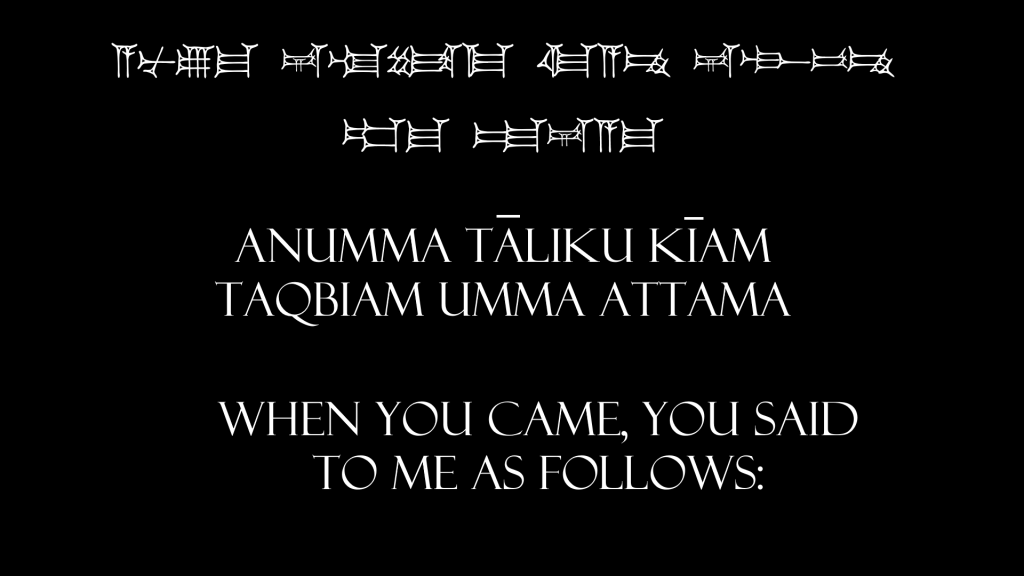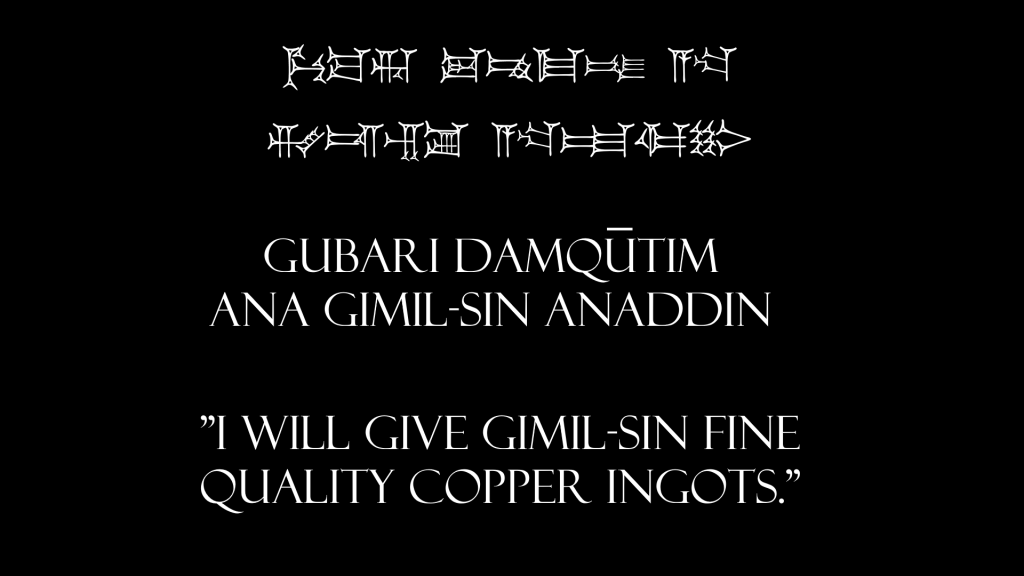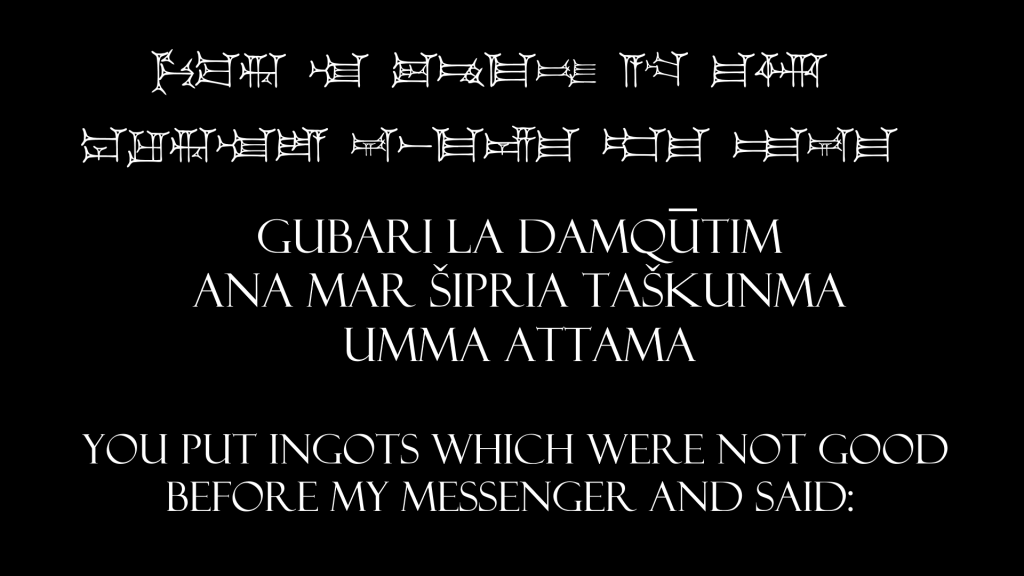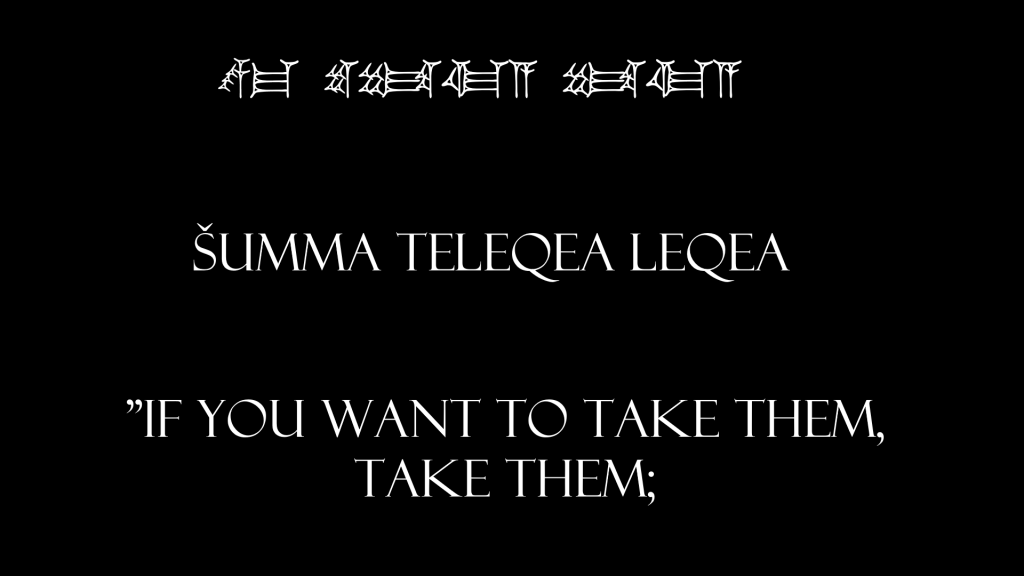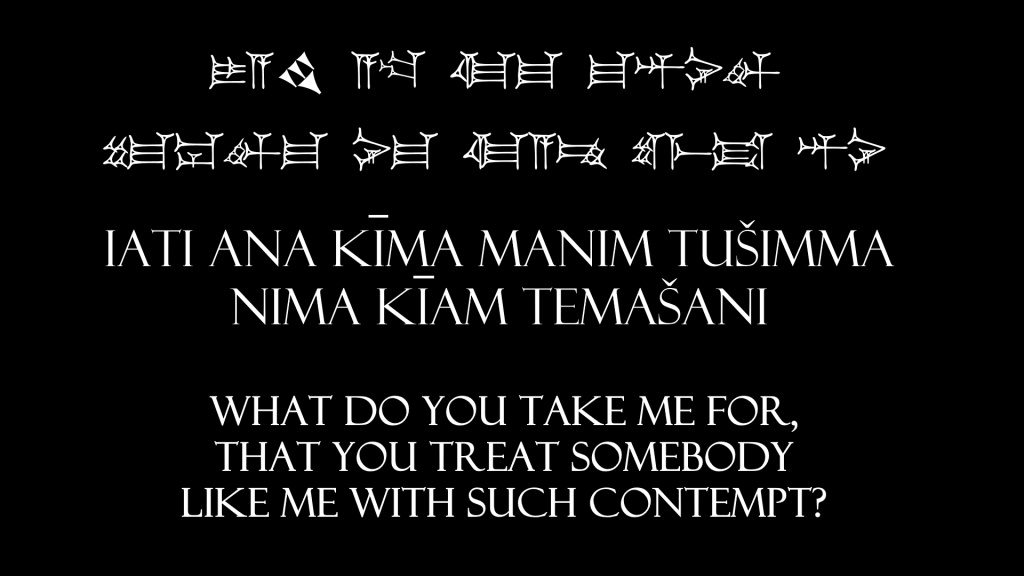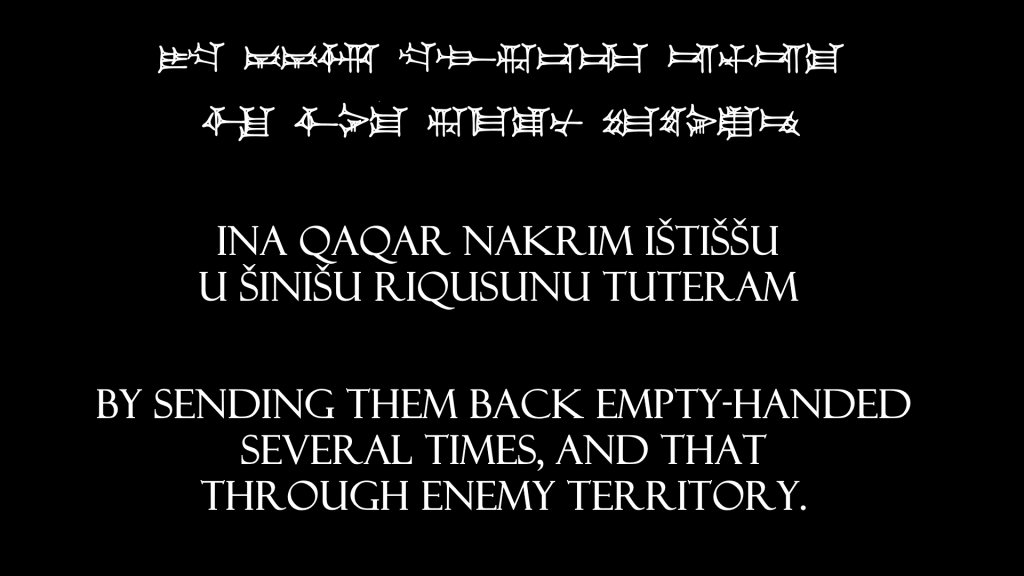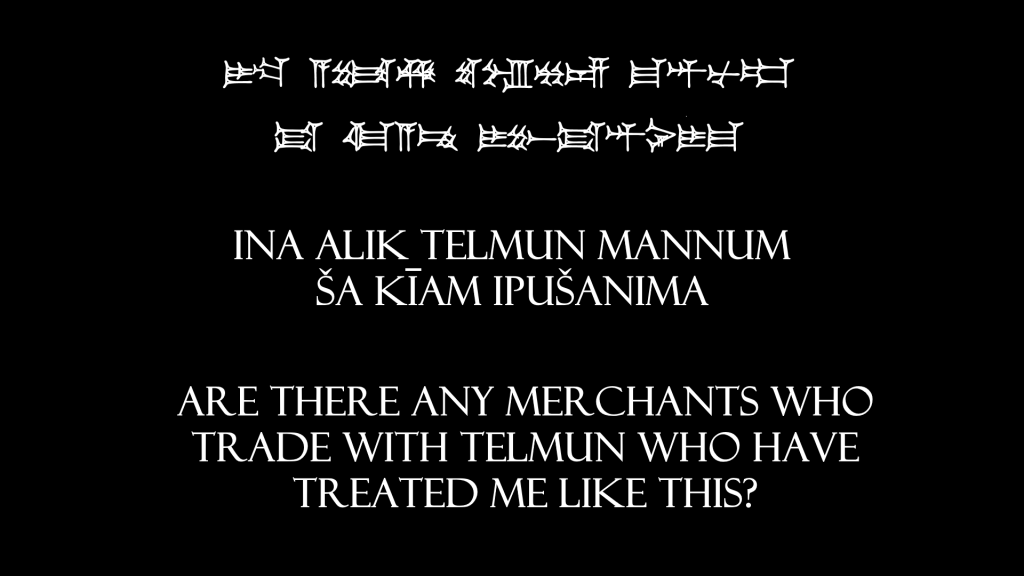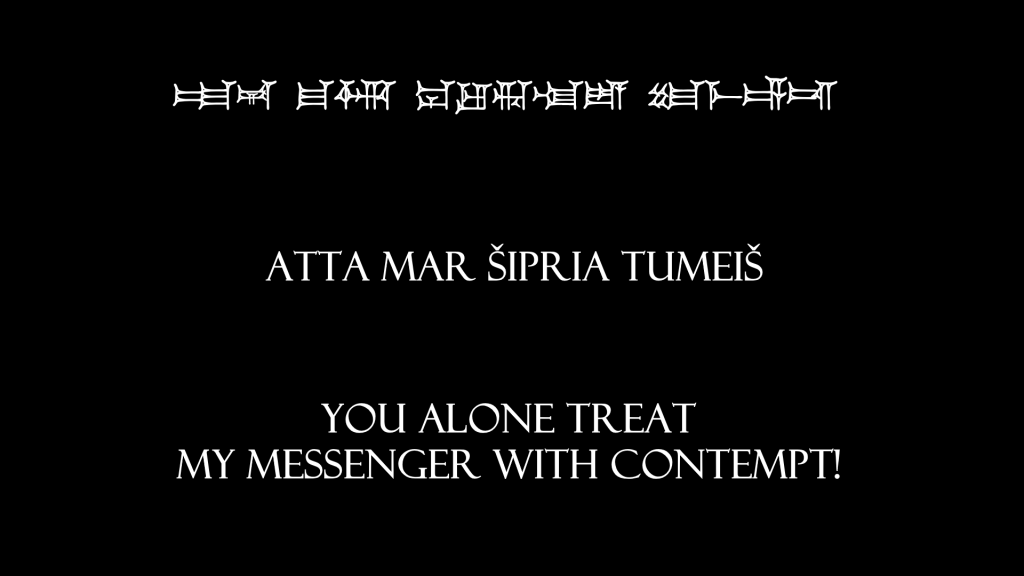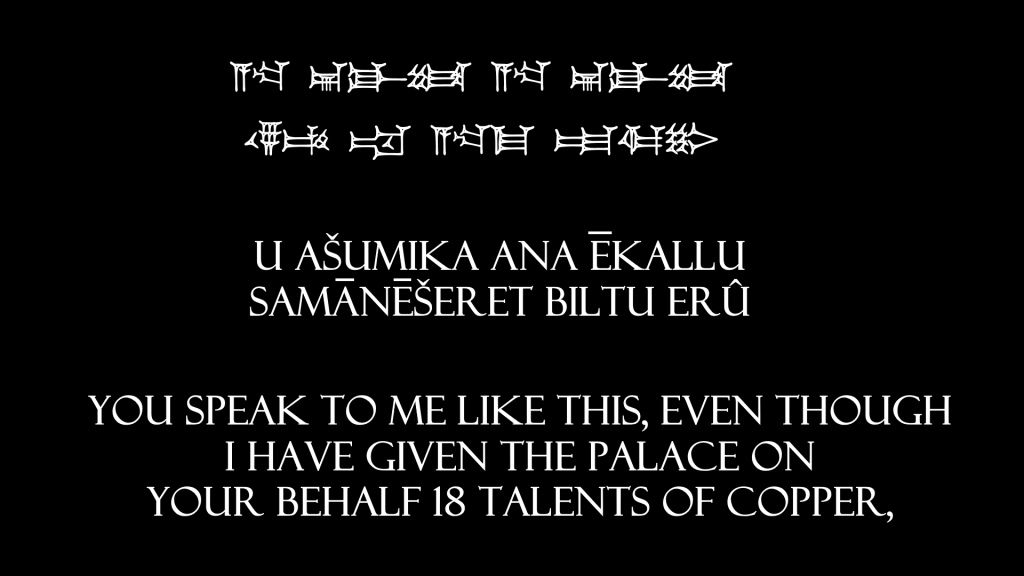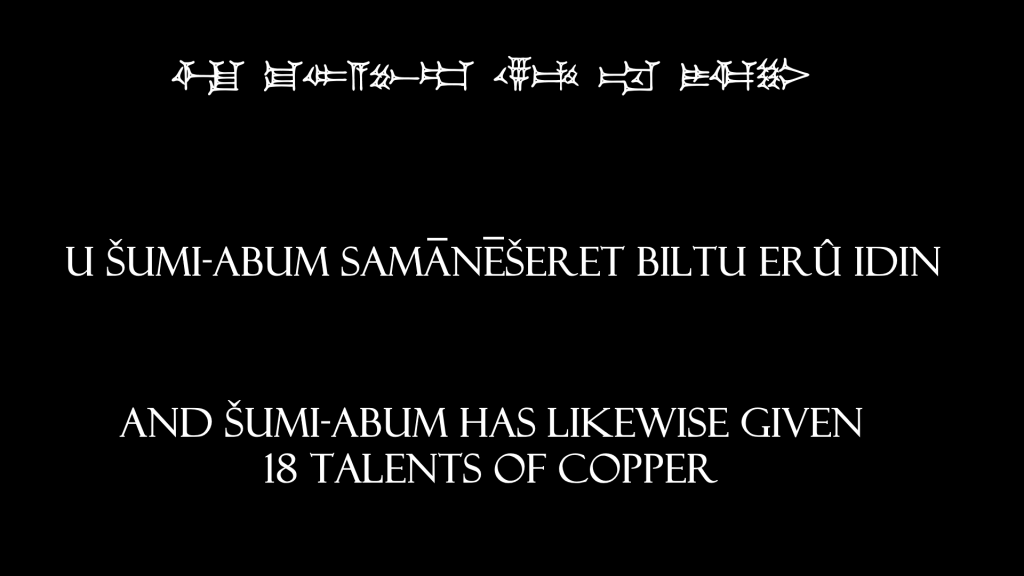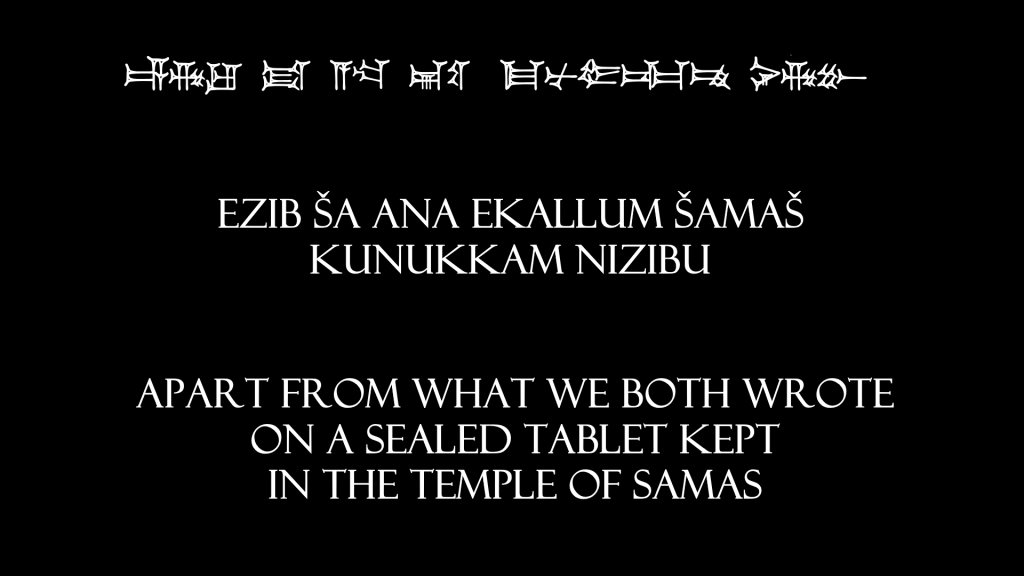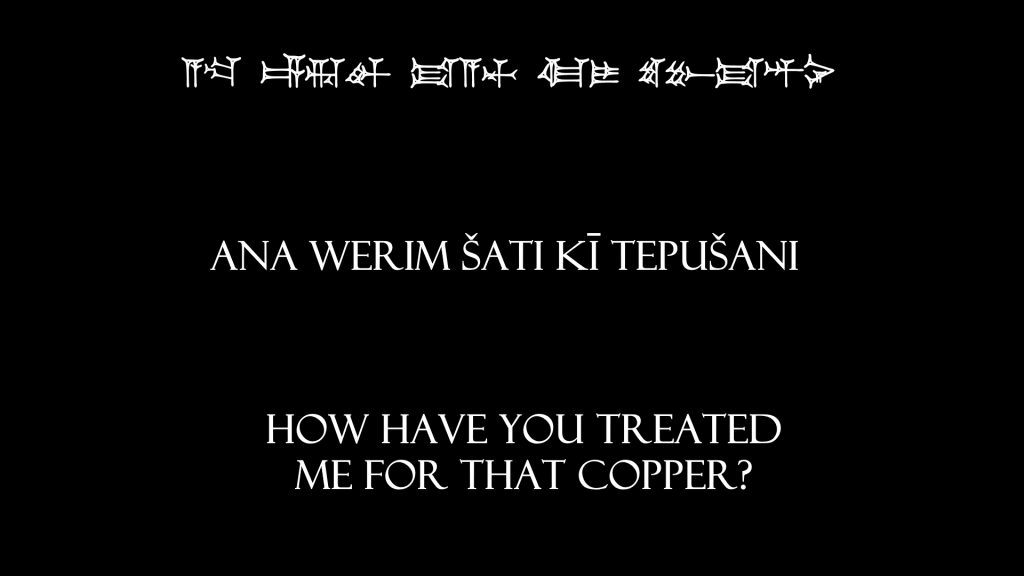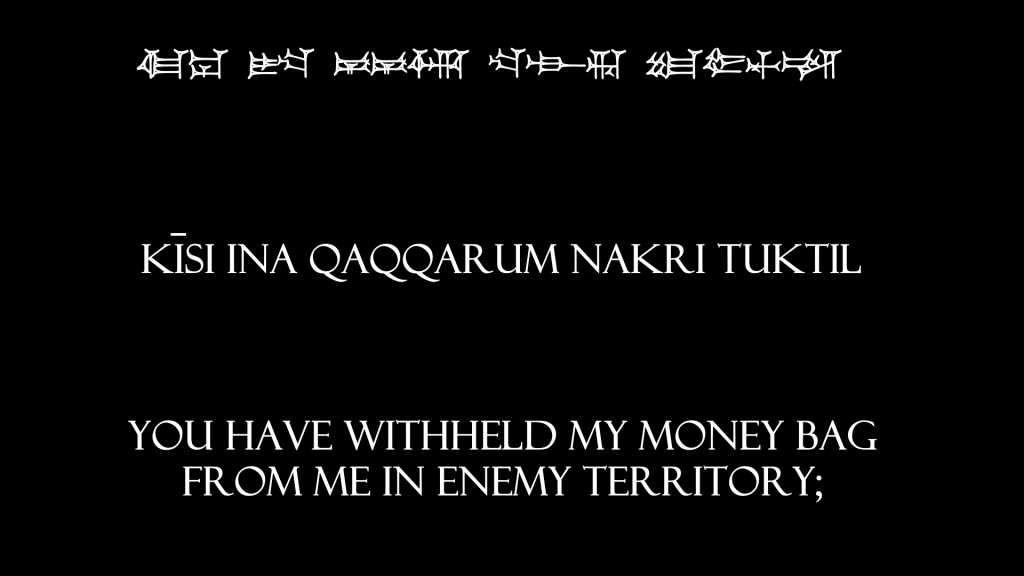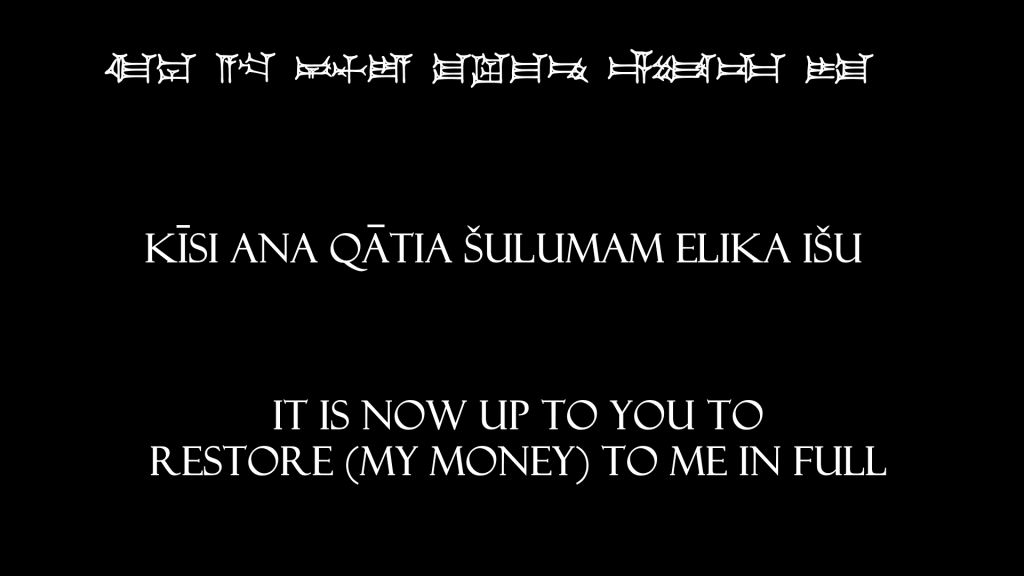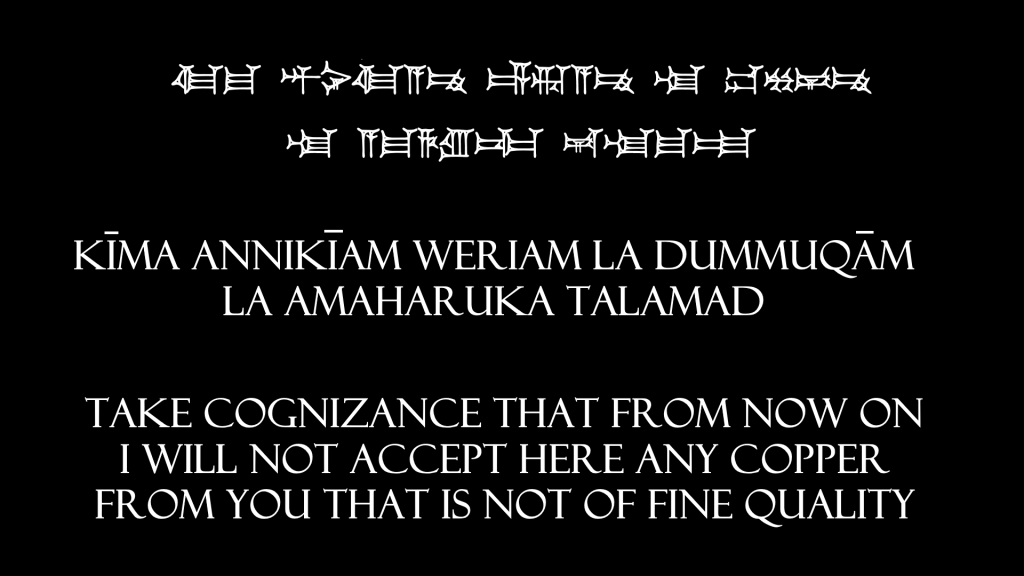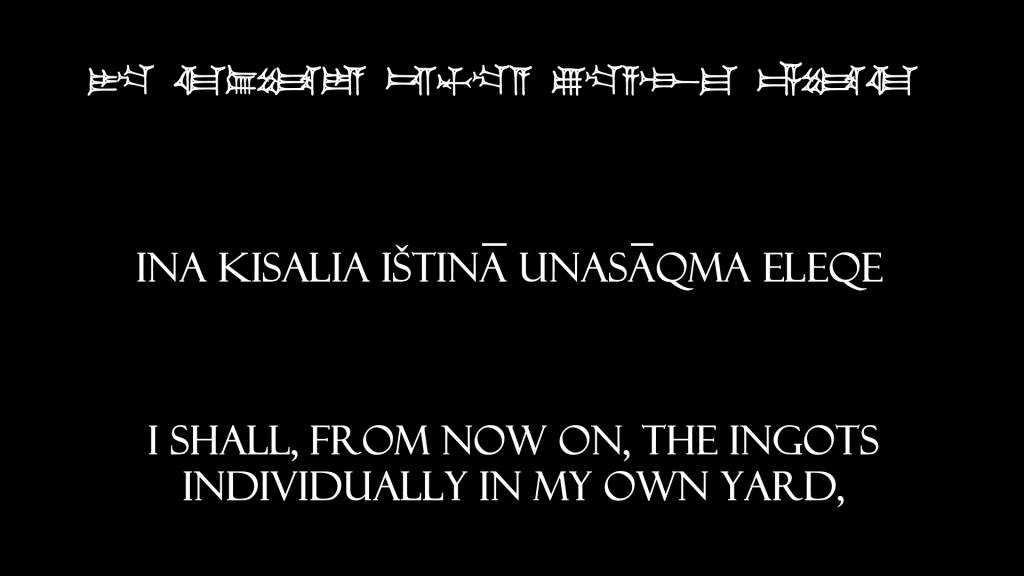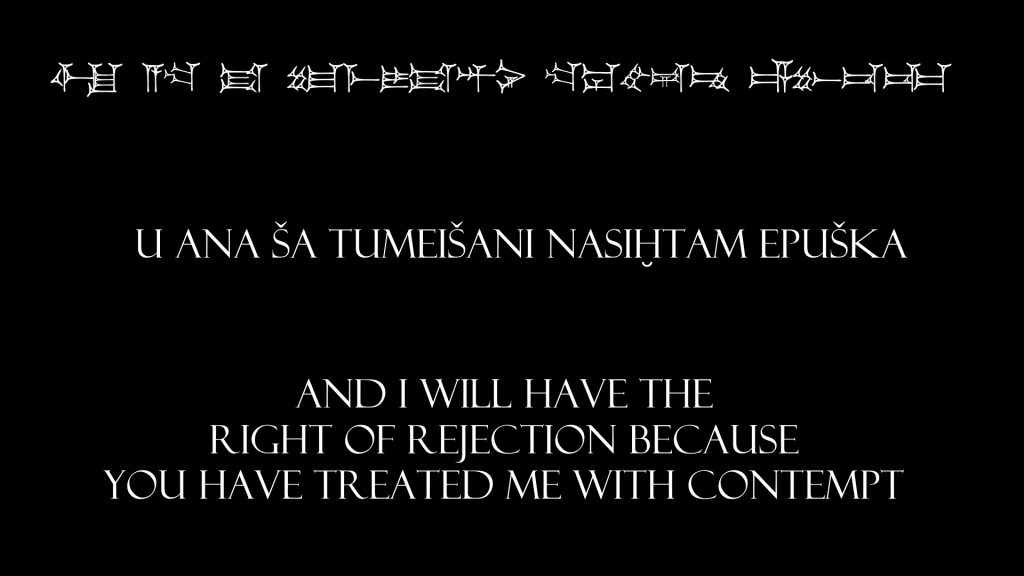What do you do when you, as a customer, have a complaint about a product you have received and the civilization you live in has one of the first writing systems in the world? Well, you use that writing system to write a complaint of course! Even if it takes hours! You will make sure the trader who sold you shoddy good gets the message.
Reading about the complaint tablet to this trader, called Ea-nasir, I was astonished to see how contemporary it felt. We have all had the experience of getting shoddy goods and being angry about it. But what’s hilarious is this tablet was composed around 1750 BC, which is 3750 years ago! In that time the Mesopotamian society rose and fell, Ancient Greece rose and fell, Ancient Rome rose and fell. The Holy Roman Empire was formed, and centuries later fell to Napoleon. A world war!
And after lying undisturbed for thousands of years as the world changed around it, an archaeologist, Sir Leonard Wooley, dug up this tablet in 1922 at the site of the ancient city of Ur, given the unceremonious name UET V 81 and added to a collection of tablets dug up in the area we call Mesopotamia. By the way, Mesopotamia gets its name from Ancient Greek where it means “between the rivers”. The “-potamia” has the same root as the -potamus in hippopotamus where hippo comes from Ancient Greek hippos (meaning horse) and potamus (meaning river) so a hippopatmus is a river horse.
It was only in 1967 that the tablet was finally translated in full among other tablets by Dr A. Leo Oppenheim and included in the book “Letters From Mesopotamia: Official, Business, and Private Letters on Clay Tablets from Two Millennia”. Dr Oppenheim was an academic who worked on ancient Mesopotamia language and society. He became the editor of the Chicago Assyrian Dictionary in 1955. This organisation would go on to publish 26 volumes with detailed information of words in Akkadian and how they are used, an amazing resource for researchers and those interested in ancient Mesopotamian languages.
The story of Ea-nasir and his shoddy copper went viral in 2015 due to it’s seemingly modern contents, and has been the subject of many a meme and Youtube video. Since this is Silly Linguistics, I wanted to show you not just what the tablet said, because it’s a fascinating glimpse into life in ancient Mesopotamia, but also the original language the tablet was actually written in.
The Tablet was written in Akkadian which is an ancient extinct Semitic language, making it related to Hebrew, Arabic, Aramaic, Ge’ez and Tigrinya. Akkadian is part of the East Semitic branch, whereas Hebrew and Arabic are part of the West Semitic branch.
A famous feature of Semitic languages is the ability to build a whole set of words from roots, called a triliteral root. An oft repeated example is that of the root k-t-b which produces Arabic كاتِب “kātib” which means “writer”, كِتاب “kitāb” which means “book”, كُتُب “kutub” which means “books”. So if you have a root, you can just fill in vowels between the root consonants to generate new words.
You can do the same thing in Akkadian
Given the root n-ṣ-r we can make the words “nāṣiru” which means “guard”, “niṣru” which means “protection” and “naṣāru” which means “to guard”
Why don’t we take a look at the tablet itself
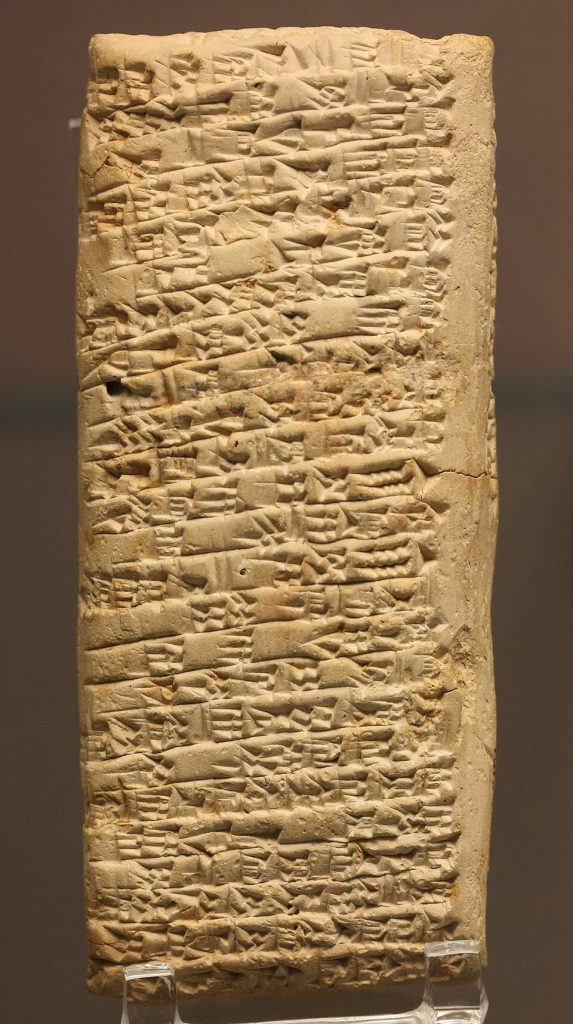
Figure 1: Image credit https://commons.wikimedia.org/wiki/File:Complaint_tablet_to_Ea-Nasir_2023.JPG
A wedge shaped stylus was pressed into clay to form wedges (the word “cuneiform” comes from Latin “cuneus” which means “wedge” + form). It was quite labour intensive. Akkadian, and other languages that used this writing system, such as Sumerian, wrote words out using syllables (rather than individual letters like we do in English and other European languages).

Figure 2: Image credit: https://commons.wikimedia.org/wiki/File:Akkadian_syllabary.svg
Wow! People really wanted to put messages down for posterity it seems.
The complaint tablet to Ea-nasir contains about 50 lines but because of how many elements there are in some syllables, some lines only had enough space for one word. The whole tablet only contains about 130 words in Akkadian but given how tricky it was to write, it would have taken quite a while to put together. And heaven forbid you made a mistake and smeared a character or slipped and messed up an adjacent line. You would have to redo the whole character or maybe even the whole line. Which just adds to the story in my opinion. Someone was so angry about the products they received that they had to send back a strongly worded letter. Ea-nasir was quite a merchant.
Sometimes you get immortalised by doing great deeds. And sometimes you get immortalised by selling shoddy copper.
Let’s look at what the tablet actually says. The English translation was done by Dr. A. Leo Oppenheim. What follows is what is called normalised text. Academics often just convert the written Cuneiform blocks to a group of syllables that can be read by anyone who knows the Latin script. So if there were three syllables “qi”, “bi” and “ma”, this would be written in the academic transcription as qi-bi-ma. But if this language had survived and maybe had started to be written using the Latin script, then we would probably just write it as “qibima”. This is normalisation. The form with the hypens helps those studying how Cuneiform is used, but if you just want to read the text, normalisation is the way to go.
There is no currently publically available normalisation of this text so I decided to do one myself. I have consulted many sources to make sure that what I produced was accurate. The tablet has already been transcribed (in the style like the qi-bi-ma example) so I used it as the source for my normalisation. But I did find a source that explained what each word used in the tablet does, so I just had to make sure that my normalisation had the right suffixes and vowels and I was able to do the whole normalisation. Apologies for any errors that got through.
Ana Ea-nāṣir qibima umma nanima Tell Ea-nāṣir: Nanni sends the following message:
anumma tāliku kīam taqbiam umma attama When you came, you said to me as follows:
gubari damqūtim ana Gimil-Sin anaddin "I will give Gimil-Sin fine quality copper ingots."
talikma taqbiam ula tepuš You left then but you did not do what you promised me.
gubari la damqūtim ana mar šipria taškunma umma attam You put ingots which were not good before my messenger and said:
šumma teleqea leqea "If you want to take them, take them;
šumma la teleqea atlaka if you do not want to take them, go away!"
iati ana kīma manim tušimma nima kīam temašani What do you take me for, that you treat somebody like me with such contempt?
mari awili anna kima kâti ana kisia mahārim ašpurama tumeišama I have sent as messengers gentlemen like ourselves to collect the bag with my money (deposited with you) but you have treated me with contempt
ina qaqar nakrim ištiššu u šinišu riqusunu tuteram by sending them back to me empty-handed several times, and that through enemy territory.
ina alik telmun mannum ša kīam ipušanima Is there anyone among the merchants who trade with Telmun who has treated me in this way?
atta mar šipria tumeiš You alone treat my messenger with contempt!
ana mala kaspim ša ina qātia tušeṣu kīam tadabub On account of that one (trifling) mina of silver which I owe you,
u ašumika ana ēkallu samānēšeret biltu erû you feel free to speak in such a way, while I have given to the palace on your behalf 18 talents of copper,
u Šumi-abum samānēšeret biltu erû idin and Šumi-abum has likewise given 18 talents of copper
ezib ša ana ēkallum Šamaš kunukkam nizibu apart from what we both have had written on a sealed tablet to be kept in the temple of Samas.
ana werim šati kī tepušani How have you treated me for that copper?
kīsi ina qaqqarum nakri tuktil You have withheld my money bag from me in enemy territory;
kīsi ana qātia šulumam elika išu it is now up to you to restore (my money) to me in full.
kīma annikīam weriam la dummuqām la amaharuka talamad Take cognizance that (from now on) I will not accept here any copper from you that is not of fine quality.
ina kisalia ištinā unasāqma eleqe I shall (from now on) select and take the ingots individually in my own yard, u ana ša tumeišani nasiḫtam epuška and I shall exercise against you my right of rejection because you have treated me with contempt.
If you are interested in learning more about Akkadian, here is a glossary to get you started
- alākum – to come
- alik – messenger, traveller
- ana – to
- anumma – now, here
- attama – you
- biltu – talent (talent was a unit of measurement)
- dabābum – to speak
- damqu – good
- ēkallu – palace
- elika – on
- epēšum – to treat
- erû – copper
- ezēbum – to leave
- ezib – notwithstanding
- gubārum – ingot
- ina – in
- ištiiššu – once
- ištinā – one by one
- išu – to have
- kaspum – silver
- kâti – you
- kī – like, as
- kīam – thus
- kīma – as, as soon as, so that
- kisalia – forecourt
- kīsum – money bag
- kullum – to possess
- kunukkum – (document) seal
- la – not
- lamādum – to learn
- leqûm – to take
- mahārum – to receive
- mala – as much as
- manim – who
- māru – son
- mēšum – to despise
- nadānum – to give
- nakrim – enemy
- nasāqum – to choose
- qabûm – to say
- qaqqarum – ground, territory
- qātum – to pay
- riqusunu – empty
- ša – whom, which, he/she who, of
- šakānum – to place
- šalāmum – to pay off in full
- šapârum – send a message
- šati – this
- šinišu – two times
- šipria – messenger
- šumma – if
- târum – to return
- u – and
- ula – otherwise, or
- umma – introduces reported speech
- yâti (or iati) – me
- waṣûm – go out
Thanks go to A. Leo Oppenheim for the amazing translation that brought the story on this tablet to life and to Sylvie Vanséveren who made an awesome font that allows us to write out Akkadian style Cuneiform on a computer.
Download them here https://www.hethport.uni-wuerzburg.de/cuneifont/
Credit: Fonts created by Sylvie Vanséveren, available on the Hethitologie Portal Mainz
Thanks for reading. This took a long time to put together so thanks for taking some time to read it. If you would like to support Silly Linguistics and allow us to do more cool stuff like this, support us by subscribing to our digital magazine right here https://sillyli.ng/6X3hyA or by clicking below
View the gallery if you would like to see what the original Akkadian Cuneiform looked like

